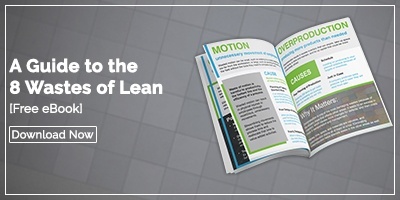 More and more companies embrace the Lean methodology for continuous improvement and waste reduction. Whether your organization is new to Lean or you need to introduce the idea to new employees and provide ongoing skill development, a successful Lean training program is crucial.
More and more companies embrace the Lean methodology for continuous improvement and waste reduction. Whether your organization is new to Lean or you need to introduce the idea to new employees and provide ongoing skill development, a successful Lean training program is crucial.
Some organizations opt to bring in a professional services group skilled in Lean knowledge. Others prefer an in-house approach. Either way can be effective if the training curriculum covers all of the most important elements of Lean. What matters is that learners come away with a solid understanding of the basics of continuous improvement and waste reduction and that they feel confident in recommending opportunities for improvement.
Our customers have found the elements necessary for a successful lean training program implementation.
Why is the Organization Practicing Lean, and What are the Benefits?
For an organization to truly embrace Lean, everyone - no matter where they participate in the value chain - should have a reasonably extensive overview and, most importantly, understand how Lean will benefit the company, customers, and employees. Whether you provide Lean training for every employee or go the train-the-trainer route, communicating why the organization has chosen Lean and outlining the expected returns is essential to staff buy-in.
It is also necessary that the training include information about what Lean is not. When many people hear the word "Lean," they associate it with cost-cutting, "doing more with less," and layoffs - all things that most employees don't want to hear. Instead, the trainer should be very clear that lean management is about eliminating wasteful work so that employees can focus their efforts on work that adds value to the customer and the organization. Team members should finish the lean training program convinced that full participation is in their best interest and that the organization is invested in making them successful.
The Lean Vocabulary
There are many terms that are used within the Lean methodology that are unique to the approach. For your team to have meaningful conversations as you discuss your implementation, everyone must be speaking the same language. We won't cover all of the terms here, but some of the most important to include are:
Bottleneck: A blocker in the value stream that negatively affects throughput. Because it is a resource capacity limitation, a bottleneck will not allow a value system to meet the customer's demand.
Countermeasures: Immediate actions to bring process performance tracking below expectations back to the expected result following a root cause analysis.
Kaizen: Kaizen is the Japanees word for “Good Change.” It is the idea that everyone in the organization is needed for continuous improvement.
Key Performance Indicators (KPIs): The metrics used to track and monitor the progress of processes and management systems.
Muda: The traditional Japanese term for an activity that is wasteful and doesn't add value or is unproductive.
Mura: A traditional general Japanese term to describe unevenness or an unexpected variation in the production process.
Muri: The general Japanese term for overburden, unreasonableness, or absurdity.
Standard Work: Standard Work is the current, documented best practice for a given activity or process. It details each activity and describes the expected results.
Statistical Process Control (SPC): Statistical process control represents the use of statistical methods to monitor and control a process to ensure it is as efficient and predictable as possible.
Takt time: Takt time is the rate at which each step in the process should be accomplished. Takt is the German word for the baton that an orchestra conductor uses to regulate the pace of the music.
Lean Principles
In many Lean training programs, the bulk of the time is spent on understanding the five principles that drive decisions in a Lean organization. They include:
Value: In Lean management, only the customer can define what is value. Value is determined precisely by each product or service, and customer value is centered in every decision.
Value Stream: Each product and process is mapped to visualize the flow of value to the customer. Any process or activity that does not add value is targeted for elimination.
Flow: Value should flow to the customer without interruptions or delays.
Pull: Nothing is produced until there is immediate customer demand. Therefore, inventory is kept to a minimum to allow for just-in-time value production.
Continuous Improvement: Lean is about the endless pursuit of perfection. Every process, even those that appear to be running well, can be improved. In addition, improvement is the responsibility of every team member.
Lean Tools and Techniques
The section of training that introduces Lean tools and techniques should be highly customized based on the tools favored by your organization, regardless of whether you do the training in-house or hire a consultant to do it. Some of the most common ones include:
The 8 Wastes: In order to make it easier to eliminate waste, the Lean methodology breaks it down into eight categories: transportation, motion, inventory, waiting, over-production, over-processing, defects, and untapped human potential.
PDSA Cycles: The PDSA cycle (Plan, Do, Study, Act/Adjust) is one of the most common ways to structure a Lean improvement.
DMAIC: A more data-driven improvement cycle is DMAIC (Define, Measure, Analyze, Improve, Control). Many organizations use PDSA for simple improvement projects and DMAIC for more involved efforts.
5 S: 5S is a workplace organization approach that includes the Japanese words seiri (sort), seitan (set), seiso (shine), seiketsu (standardize), and shitsuke (sustain).
Fishbone Diagrams: Fishbone diagrams are a method for visualized problem-solving. They break potential root causes into elements, including machines, environment, materials, methods, people, and management.
Catchball: Cathball is the process of vetting ideas and strategies to meet an objective by engaging managers and teams in a dialog to reach a consensus.
Gemba Walks: Gemba walks are a management technique in which leaders visit the place where work is done to ask questions, show respect for workers, and identify potential opportunities for improvement.
Hoshin Kanri: Hoshin Kanri, also known as policy deployment, is a strategic planning method that aims to align the organization around three to five long-term breakthrough goals.
Kanban: Kanban is a method for visualizing work to eliminate bottlenecks or interruptions inflow. It also serves to limit work in progress.
Lean Software
If you are using Lean software to support your continuous improvement efforts, your Lean training software should include a section on how it will be used. Most programs focus on:
Capture: Team members should understand what constitutes an opportunity for improvement and how it should be documented in the solution.
Implement: This section covers how the software will support improvement projects and collaboration.
Search: It is important to cover how to research past opportunities for improvement to ensure that each project builds on the knowledge from the last.
Dashboards: The best solutions allow for custom dashboards configured for the needs of each particular user.
Sigma Certification Program
Organizations taking a very formal approach to Lean and perhaps adding elements of the more data-centric Six Sigma approach may want to opt for Sigma certification and Lean six sigma training. Six Sigma certification verifies an individual's understanding and proficiency with the tools and measurement instruments used for sigma programs. Certificates for Six Sigma training are awarded in levels using a belt color classification system much like the one used in karate training.
Successfully implementing the Lean approach is a significant commitment by the organization, so starting with an excellent Lean training program is wise. One that covers these sections will set your team on the right path toward increasing value and eliminating waste.




Add a Comment